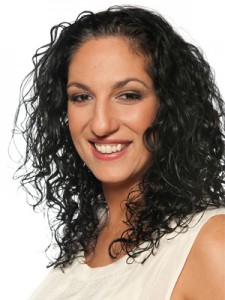Every week, the Friday links here at Muslimah Media Watch include several stories about Muslim women’s clothing. Our posts often cover these issues as well. We look at definitions of veiling and modesty, and how these are perceived by Muslim and non-Muslim media. How some Muslim women are often seen as oppressed by their clothing, or other times are seen as stronger/better/more pious because of their clothing, and how people’s identities are always much more complicated than this.
But most of you who read MMW don’t actually need me, or any of the other writers, to tell you this stuff. I could probably write a different post each week focusing only on representations of clothing or headscarves, but that might get old. As much as I’m having fun pulling apart some of the ridiculous articles that come our way, this is something that many of you can do on your own.
Last week, when writing about the Charming Burka, I promised to have more of a discussion on these clothing issues and why they get talked about so much. So, a question. This might be a bit of a can of worms that I just may be opening here, but here goes. I guess I’m essentially wondering why there’s such a focus in the media on issues of how Muslim women dress, and especially on this clothing as oppressive. Before this starts to sound just too simplistic, let me explain. I’m working on the assumption that most women choose how they want to dress, and are entitled to make that choice (acknowledging that the concept of “choice” can be problematic inside and outside of Islamic contexts, but we’ll talk about that one another time.) However, there are also some women who may indeed dress a certain way because they are forced to do so because of whatever oppressive and patriarchal forces they are up against. (These categories are not necessarily so clearly defined.)
Given that we’re talking about images of Muslim women, this second category usually manifests as women who are forced to wear a burqa (or niqab, or hijab) because of overbearing and/or abusive fathers, or other male family or community members. This certainly does not represent anything close to all Muslim women, and even those covered by this category have much more complex lives than it suggests. (It is also certainly not unique to Muslim communities.) But let’s accept that some women do fit into this category in some way.
The thing is, even for this segment of the population for whom clothing is something imposed on them, should what they wear really be our biggest concern? My impression is that if a woman is in a situation where she truly does not have any say in what she wears, chances are she is probably facing greater abuse (or threats thereof) than the cloth that she is wearing on her body. Why, then, does the focus so often stop at the level of clothing? If the writers of these articles truly feel that these women are oppressed, then why don’t they look at the actual oppression that they are living with, rather than the headscarf (or face-covering, or whatever) that supposedly indicates this oppression? Or do the writers truly think that hijab, in whatever form it takes, is so inherently oppressive that it warrants constant media coverage and analysis?
I’m having a hard time articulating this, since it is often really inappropriate to assume that someone else is oppressed (or worse, needing you to save them), whether the issue is clothing or anything else. I do not want to be saying that people writing these articles should just switch to another issue without also looking critically at themselves and their own position and relation to the topic. But even when people do feel some need to write about “oppressed Muslim women,” why is this done so often in the context of their clothes? Is this just a continuation of the veil-fetish art and literature of colonial times? Is it simply because the scarf is such a visible marker of being different from mainstream European/North American society? Is it really just a misunderstanding that seems to lead people to see the scarf as inherently oppressive, or is there an agenda behind wanting to portray Muslim women (and by extension, Muslim cultures) in certain ways? Is this talked about differently in Western and non-Western media? I’d love to hear people’s thoughts on this.
Major disclaimer before anyone starts thinking about commenting: As usual, Muslimah Media Watch is a forum to discuss representations of Muslim women. This means that, as usual, this is not the place to discuss whether burqas (or headscarves) are required in Islam, or whether they are inherently oppressive. The question is about why these get talked about in the ways that they do, and specifically why they often get seen as the form of oppression that women are dealing with.













